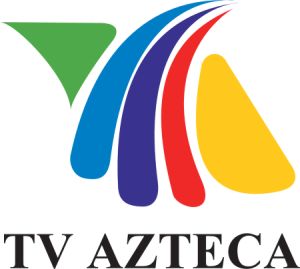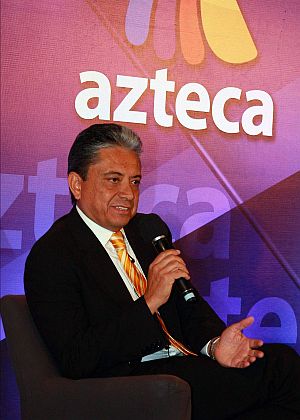Mexico City - A teary, blonde woman sits alone at her kitchen table. In a matter of days, she's been left fatherless and buried in debt. A handsome man offers her milk, though not just any milk, Lala milk from Grupo Lala SAB.
This is a scene from one of TV Azteca SAB's newest prime-time telenovelas, Las Bravo. Mexico's second-biggest broadcaster is taking advantage of hits that reach an average of 65 million viewers a week to encourage marketers to pay for their products to appear or be featured in soap operas and reality-television shows.
"If you sell soap, shampoo, soda, beer, and cars with mass appeal, then obviously you're going to want TV as an important marketing medium," TV Azteca Chief Executive Officer Mario San Roman said in an interview last week at his office in Mexico City. "And if we fit those into our plots people are going to remember them."
Product placement in TV shows allows Azteca to make additional money without adding time for commercials and helps a brand reach viewers who are increasingly skipping advertisements with digital video recorders. The Mexico City-based company depends on advertising for 91 percent of its sales, and that revenue stream is under threat as new national broadcast networks are created this year.
Billionaire Ricardo Salinas purchased state-owned broadcaster Azteca in 1993 to compete with Grupo Televisa SAB, and the network now reaches three out of 10 Mexican TV viewers. Both broadcasters will soon face more competition as Mexico's regulator accelerates plan to auction off two new broadcast networks by March, part of President Enrique Peņa Nieto's push to increase competition in the highly concentrated industry.
Azteca's shares have fallen 25 percent in the last year. Televisa has gained 26 percent in the same period.
Selling Products
 |
Salinas also controls Totalplay, which uses fiber optics to deliver Internet, pay-TV and landline phone service. San Roman said that Totalplay will soon allow viewers watching Azteca to click on their TV screens to know more about the products featured in shows, without disrupting their programming. Totalplay has more than 130,000 users and plans to reach more than 7.5 million households in the next five years.
Telenovelas are ripe for product placement because the dramas have been such an intrinsic part of Mexico's popular culture for decades. And Azteca can charge more to integrate a brand into a show's plot than it can for regular ad space, San Roman said.
Unilever Sponsorship
"Nowadays advertisers have a larger variety of ways to invest money and be more efficient with their investments," San Roman said. "By being part of the show's content you make the product relevant."
A Lala press official didn't respond to requests for comment.
The goal is to work with companies from the script's inception and have complete soap operas sponsored by products, such as Azteca's "Let life ruffle your hair," San Roman said. The mini series about four friends is based around a hair salon and sponsored by Unilever's hair products. Azteca produced about 20,000 hours of content last year and is in talks to produce and export content for U.S. broadcasters, he said.
About 57 percent of product placement on TV in Mexico is shown through Azteca's channels, with the other 43 percent on Televisa's networks, according to a study from Mexico's largest university, UNAM, which evaluated broadcasts between 2006 and 2012. More than half, or almost 37 billion pesos ($2.5 billion), of the country's annual advertising budget is dedicated to over-the-air channels, according to the Mexican chamber of the communications industry.
Skipping Commercials
"Soap operas are still a big part of Mexico's TV consumption," said Julio Juarez, a communications and media researcher at UNAM. "It's magnified here because of the few options viewers have. You basically have two chains managing the majority of the over-the-air TV offer."
Broadcasters have realized product-placement is a profitable business because they can increase ad sales without registering that TV time as an advertisement, Juarez said.
According to existing laws, broadcasters can only dedicate 18 percent of total transmission time, or about 11 minutes an hour, to advertising. Time spent marketing a product inside a channel's show doesn't count toward this total.
In another scene of "Las Bravo," which tells the story of a mother who chooses to run a male strip club with her three daughters after her husband dies, they discuss the benefits of Lala milk as they fill their children's glasses: higher immune-system defenses and stronger teeth.
To contact the reporter on this article: Patricia Laya in Mexico City at playa2@bloomberg.net.


